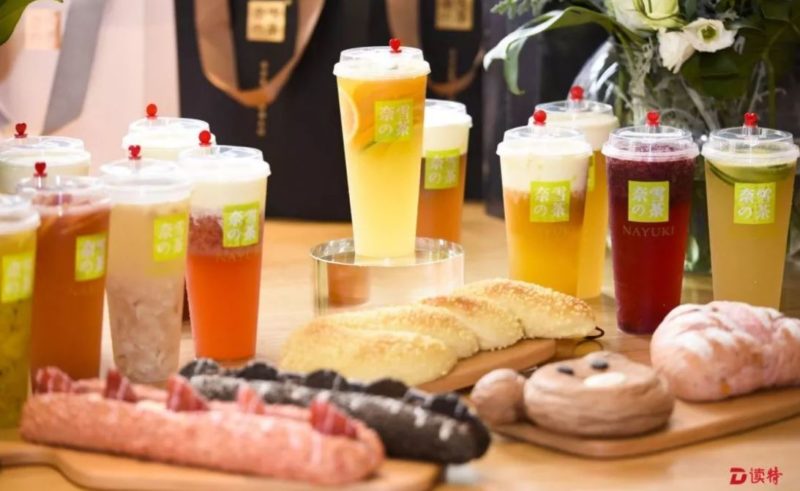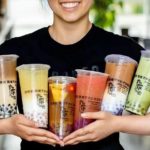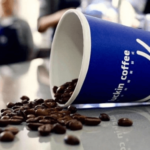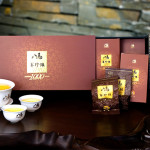The success of Nayuki, the Chinese new-style tea store going global
In contrast to the downfall of the Chinese coffee-based beverage company Luckin Coffee, China’s new style tea market did not cease to expand during the pandemic which caused major economic recessions across the globe. Nayuki, A local Chinese new style tea company, announced its new round of funding this June, which was a nearly 100-million-dollar investment. As of March 2018, the valuation of Nayuki was approximately 6,000 million RMB. According to the white papers for 2019 on new style tea consumptions co-published by Nayuki and 36kr, the market size of China’s new style tea market has increased to 200,000 million RMB. By June 2020, Nayuki has opened over 349 physical stores covering more than 50 cities in China. Following the success of Hey Tea, one of Nayuki’s major competitors in China’s new style tea market, Nayuki has entered the global market via the United States and Japan.
Product Innovation: Fruit Tea & Soft European Bread Pairing
Nayuki introduced the “fruit tea and soft European bread pairing” as its signature product to the market. Although product pairing has been widely used in the retail industry, it was quite an audacious move for Nayuki to make. Most of Nayuki’s competitors in the industry, including Starbucks and Hey Tea, choose to stay “focused” and stick to one category only, no matter it is coffee or tea. With unique insights into the psychology of Chinese female consumers, Nayuki’s founder Peng Xin, however, considered “Fruit tea & European bread” a great combination that meet “two kinds of needs in a single scenario” and the sales number of the soft bread take up no less than 50% of Nayuki’s total sales nowadays.

Source: Sina Weibo, Nayuki’s soft European bread and tea pairing
Behind the success of Nayuki’s product innovations are its high-quality raw materials and stable supply chain. In order to ensure the quality and distinct taste of Nayuki’s products, Peng Xin and her team have visited and signed contracts with several renowned tea plantations across China and Taiwan. Nayuki has also built its own factories to manufacture fruit in season, which further enhanced the stability of its supply chain.
Aesthetic-Centered Marketing
Although China’s new style tea market is quite a large cake to share, getting a slice of it is not easy considering relatively low barriers to enter the industry and fierce competitions from both local and foreign companies in China. According to the white paper for 2019 new style tea consumptions co-published by Nayuki and 36kr, about half the consumers of new style teas in China belong to the post-90s generation and female consumers take up 70% of the market. Targeting a young and female-dominated market, Nayuki has been taking an aesthetic-centered marketing approach.
Nayuki has been working on a branding project called “Nayuki Cupseum” since 2019, which has been quite successful so far. The concept of the project is to exhibit artworks made by world-renowned artists using Nayuki teacups. So far, Nayuki has held three series of exhibitions which include “Big hugs to you” collaborating with American artist Christopher David Ryan during May 2020, “Being A Cat” with Pepe Shimada and “Ni Hao New Year” with Cinyee Chiu. Apart from the “Nayuki Cupseum” galleries, Nayuki cooperated with the 50th Anniversary of Anderson Lifetime Achievement Award in September 2019, during which every store would exhibit paintings of “The Ugly Duckling,” “The daughter of the sea,” and “Gorrila.”

Source: Nipic, Nayuki Poster
“Marketing isn’t just about advertising. Product development, space design, developing new techniques are all marketing,” according to Peng Xin, the founder of Nayuki. The emphasis on Nayuki’s aesthetic appeal is reflected on its physical stores as well, from lighting, to color tone, to location, all tailored to the needs of young female consumers, such as taking pictures inside the store to publish on social media. The in-store experience seems to be no less important than the quality of the tea itself for consumers. Nayuki is selling more than a cup of tea, but a whole package of experiences from purchasing online, to picking up at the store, to taking a selfie with its beautifully made teacup, which at its core is a reflection of a lifestyle ideal consumers have been longing to have.
Nayuki’s Cultural Appeal: The Arts of Cultural borrowing
Nayuki might strike consumers as a Japanese brand, but it is in essence a local Chinese company that borrowed a Japanese name. This should not come as a surprise as this kind of cultural borrowing is hardly an uncommon practice, especially in the fashion industry. The rising of Nayuki implies the strong influence of the Japanese cultural exports among Chinese consumers. Although tea-drinking culture originated from China and later exported to Japan, the Japanese tea-drinking culture has evolved a system of its own and become quite different from the modern-day Chinese tea-drinking culture. Therefore, taking on a Japanese brand image has facilitated Nayuki’s success by differentiating itself from other local Chinese beverage brands.
Post-Pandemic Age: What to Expect for Nayuki and China’s New style tea Market?
Although the coronavirus has been contained very well in China, consumption patterns have largely shifted from offline to online, which might continue to be the new normal until the vaccines come out. In the meanwhile, new challenges have been raised for the China’s new style tea market and brought new opportunities for Nayuki as well. In response to consumers’ expectations for a higher security standard, Nayuki has adopted a new operating mode that requires no direct human contact. According to Baidu index search frequency data, the search volume for Nayuki peaked in middle of the pandemic on April 1st, during which Nayuki brought 3,000 free drinks to cheer up the doctors and nurses at the Leishen Mountain hospital in Wuhan.

Data Source: Baidu Index, Search Index for Nayuki from January to August 2020
The pandemic has also rushed China’s new style tea market into digital transformation. During the period when Covid-19 was at its peak in China, Nayuki offered free delivery for all online orders. As a result, the total number of transactions completed on Nayuki’s WeChat mini program have doubled compared to the previous year. However, such transformation requires both financial and technological support, which might imply a reshuffle of the market. Although major companies such as Hey Tea and Nayuki could probably make through the pandemic with enough funding to adjust to the new normal, small beverage stores might find it very difficult and eventually exit the market.
What we can learn from Nayuki’s success
- Nayuki conducted market research to precisely identify their target consumers, then focused their marketing tactics on them. Nayuki has a clear brand positioning that targets 25 to 29 year old women. Nayuki’s marketing campaigns such as the “Nayuki Cupseum” projects and art exhibits with the Anderson Lifetime Achievement Awards are both tailored to satisfy the cultural and aesthetic needs of a young female audience.
- Nayuki differentiated itself from the myriad of other new-style tea brands on the market with its product pairing and store aesthetic. Additionally, the brand borrowed a Japanese name which is unique and stands out.
- The tea-store used an O2O marketing strategy to establish online presence, which was especially useful during the COVID-19 pandemic. Consumers are raising their standards for safety and convenience, which is particularly important for brands to establish online presence during a pandemic. Relying on third-party platforms like WeChat, Nayuki realized digital transformation and made it through the pandemic.
Author: Isabella Li
Learn more about the tea market in China
Listen to 100 China entrepreneur stories on China Paradigms, the China business podcast
Listen to China Paradigm on Apple Podcast






![[Podcast] China Paradigm #27: How to succeed in China’s tea market while starting from scratch](../wp-content/uploads/2019/04/China-marketing-podcast-27-150x150.jpg)









